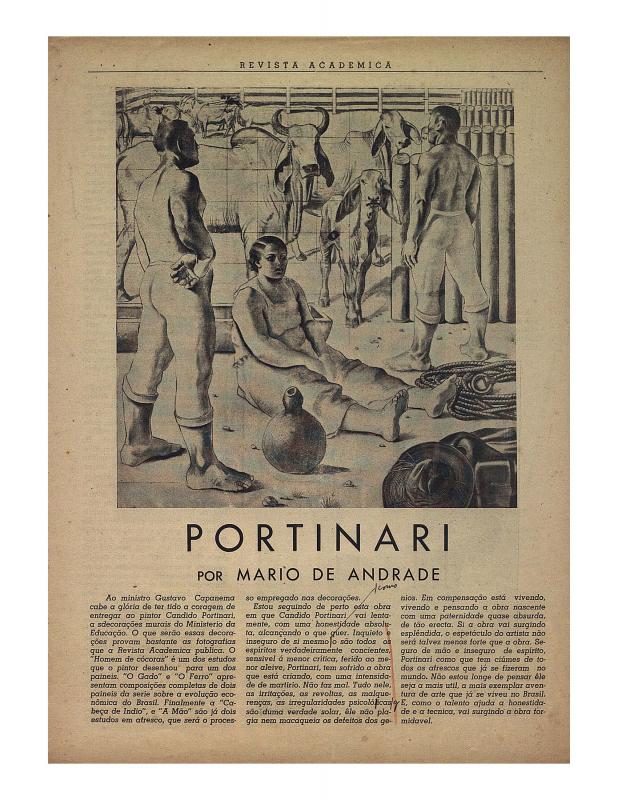This article is about the movement of intellectuals, artists, and works between Brazil, the United States, and Europe in the heyday of modernism. The article also testifies to the fame in international circles of the Brazilian painter, Candido Portinari. Like Diego Rivera (to whom he is compared in this article), Portinari’s range and output are vast. Portinari’s favorite subjects are rural scenes and urban subjects, refugees fleeing from difficult conditions in northeastern Brazil, key events in Brazilian history (since the arrival of the Portuguese in 1500), portraits of his own family, and book illustrations.
Candido Portinari (1903–1962), in addition to Emiliano Di Cavalcanti (1897–1976), would become Brazil’s official painter from the late 1930s to the mid-1950s. He was a controversial figure in academic circles and among Brazilian supporters of abstract art. The poet and art critic Mário de Andrade wrote about Portinari’s work during that period [see “Portinari” in ICAA digital archive, doc. no. 781236]. Portinari’s relationship with Lucio Costa led to the former’s involvement in the MES project (Ministério de Educação e Saúde, 1936–1942), the signature building in Brazilian modern architecture. To understand his tile mural for the façade of the building’s auditorium, see “A pintura mural de autoria de Cândido Portinari” (doc. no. 1110857). The sociologist Gilberto Freyre’s version of these narratives in Portinari’s work introduces the idea of “lusotropicalismo” [Portuguese Tropicalism], a theory that posits miscegenation as a positive force in Brazil’s development; see “Portinari” (doc. no. 1075292). His political leanings prompted him to join the PCB (Partido Comunista Brasileño) during the following decade, and in 1947, he ran for a senate seat. Persecuted by Eurico Gaspar Dutra’s anticommunist government, he went into exile in Uruguay.
There is another article from the same period, written on the occasion of the 1939 New York World’s Fair by Mary Katherine Sater; see “Brazilian Bombshell: Candido Portinari's Work is Best of Latin Americans” (doc. no. 1110884); and another, by the journalist Milton Brown; see “O instrumento do fotógrafo ou o fotógrafo-instrumento?” (doc. no. 1110899).




